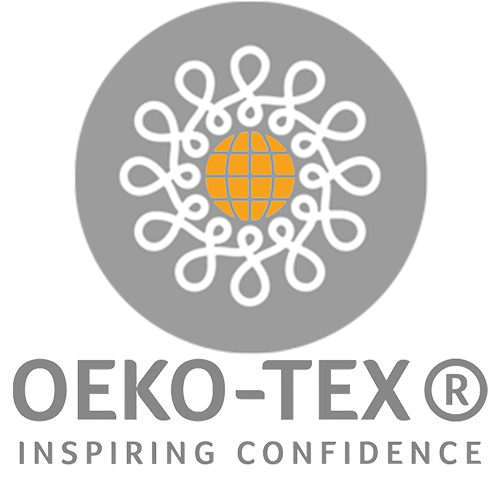Matte Satin
Matte Satin is a premium matte finish satin fabric that combines the luxuriousness of satin with the elegance of a matte texture, making it ideal for high-end fashion and a variety of sophisticated accessories. This fabric not only stands out in appearance but also excels in durability and comfort, making it a top choice for designers striving for perfection.
Key Features
- Premium Matte Sheen
- Soft Hand Feel
- Superior Durability
- Excellent Wrinkle Resistance
- Outstanding Colorfastness
- Breathability and Moisture Management
Special Techniques and Technology
Matte Satin fabric employs advanced double-sided matte finishing technology, setting it apart from traditional high-gloss satin fabrics. This treatment results in a refined, soft sheen on the fabric surface, enhancing its wrinkle resistance and colorfastness. Additionally, the fabric is constructed with high-density weaving techniques, paired with fine yarn count, providing exceptional durability and tear resistance.
Differences from Ordinary Fabrics
- Luster Effect: Unlike traditional satin fabrics that exhibit high reflectivity, Matte Satin’s matte finish technology offers a more subdued and elegant sheen, suitable for high-end fashion designs.
- Hand Feel: While ordinary fabrics may feel coarse, Matte Satin undergoes special treatments to achieve a silky smooth, soft hand feel, enhancing comfort.
- Durability: With high-density weaving and premium fiber materials, Matte Satin is more resistant to abrasion and tearing than ordinary fabrics, ensuring a longer lifespan.
- Wrinkle Resistance: The special finishing techniques of Matte Satin ensure it remains smooth and wrinkle-free even after prolonged wear, unlike ordinary fabrics that may wrinkle easily and require frequent ironing.
- Colorfastness: Utilizing high-temperature fixation processes, Matte Satin maintains vibrant, long-lasting colors, whereas ordinary fabrics may fade noticeably after multiple washes.

Application scope
High-End Fashion: Perfect for creating dresses, evening gowns, and bridal gowns, adding a touch of elegance and sophistication.
Casual Apparel: Ideal for shirts, skirts, and trousers, providing soft comfort suitable for daily wear.
Fashion Accessories: Great for scarves, headbands, and handbags, enhancing overall ensemble with a touch of luxury.
Home Décor: Suitable for curtains, cushions, and bedding, bringing a warm and elegant ambiance to home interiors.
Available clothing types
- Satin midi dress black
- Double bow satin mini dress black
- Satin cross back tie waist A-line dress
- Silk dress

Frequently Asked Questions (FAQs)
How does Matte Satin achieve its matte finish?
- The fabric undergoes a special matte finishing process, giving it a refined sheen without the high reflectivity of traditional satin.
What types of designs are suitable for Matte Satin?
- Its understated elegance and soft hand feel make it ideal for high-end fashion, evening wear, bridal gowns, and sophisticated accessories.
Is Matte Satin prone to wrinkling?
- Thanks to its premium fibers and high-density weaving, Matte Satin has excellent wrinkle resistance, maintaining a smooth appearance even after prolonged wear.
Can Matte Satin resist UV degradation?
- Yes, the fabric includes UV inhibitors that effectively resist sun damage, maintaining vibrant colors and fabric strength.
Is Matte Satin suitable for sportswear?
- While primarily used for high-end fashion and evening wear, its soft, comfortable texture also makes it suitable for high-quality sportswear and casual wear.
How to view the complete FAQ

Origin and Development
Matte Satin is a luxurious fabric known for its smooth surface and subtle, non-reflective sheen. Unlike traditional satin, which is characterized by a glossy finish, matte satin offers a more understated elegance, making it a versatile choice for various applications.
Key Milestones
- Ancient Origins of Satin: Satin weaving techniques date back to medieval China, around the 12th century. The original satin was made from silk and was known for its high sheen and smooth texture. It quickly became a symbol of luxury and was used for garments worn by royalty and the elite.
- Introduction to Europe: By the 14th century, satin made its way to Europe through trade routes, becoming highly prized among European nobility. Italian and French weavers began producing their own versions of satin, incorporating local styles and techniques.
- Early 20th Century – Evolution to Matte Finish: The early 20th century saw innovations in textile production, including the development of matte satin. This new variation was created by modifying the weaving process and using different fibers, resulting in a fabric with a smooth surface but without the high gloss of traditional satin. This made matte satin suitable for a wider range of applications, including more casual and everyday garments.
- Mid-20th Century – Synthetic Fibers: The advent of synthetic fibers such as polyester and acetate in the mid-20th century revolutionized the textile industry. Matte satin began to be produced using these fibers, making it more affordable and accessible. The use of synthetics also enhanced the durability and ease of care of matte satin fabrics.
Modern Day – Versatility and Popularity: Today, matte satin is widely used in fashion, bridal wear, home decor, and even in activewear. Its versatility, elegant drape, and soft sheen make it a favorite among designers and consumers alike.
Cultural Impact
Matte Satin has played a significant role in fashion and interior design. Its understated elegance and luxurious feel have made it a staple for bridal gowns, evening wear, and sophisticated home decor items like drapes and upholstery. Matte satin offers a refined aesthetic that appeals to modern sensibilities, blending tradition with contemporary style.
Summary
Matte Satin is a fabric that combines the luxurious feel of traditional satin with a modern, understated finish. Its history reflects the evolution of textile production from ancient silk weaving techniques to the use of innovative synthetic fibers. Today, matte satin continues to be celebrated for its versatility, elegance, and practical applications across various industries.










